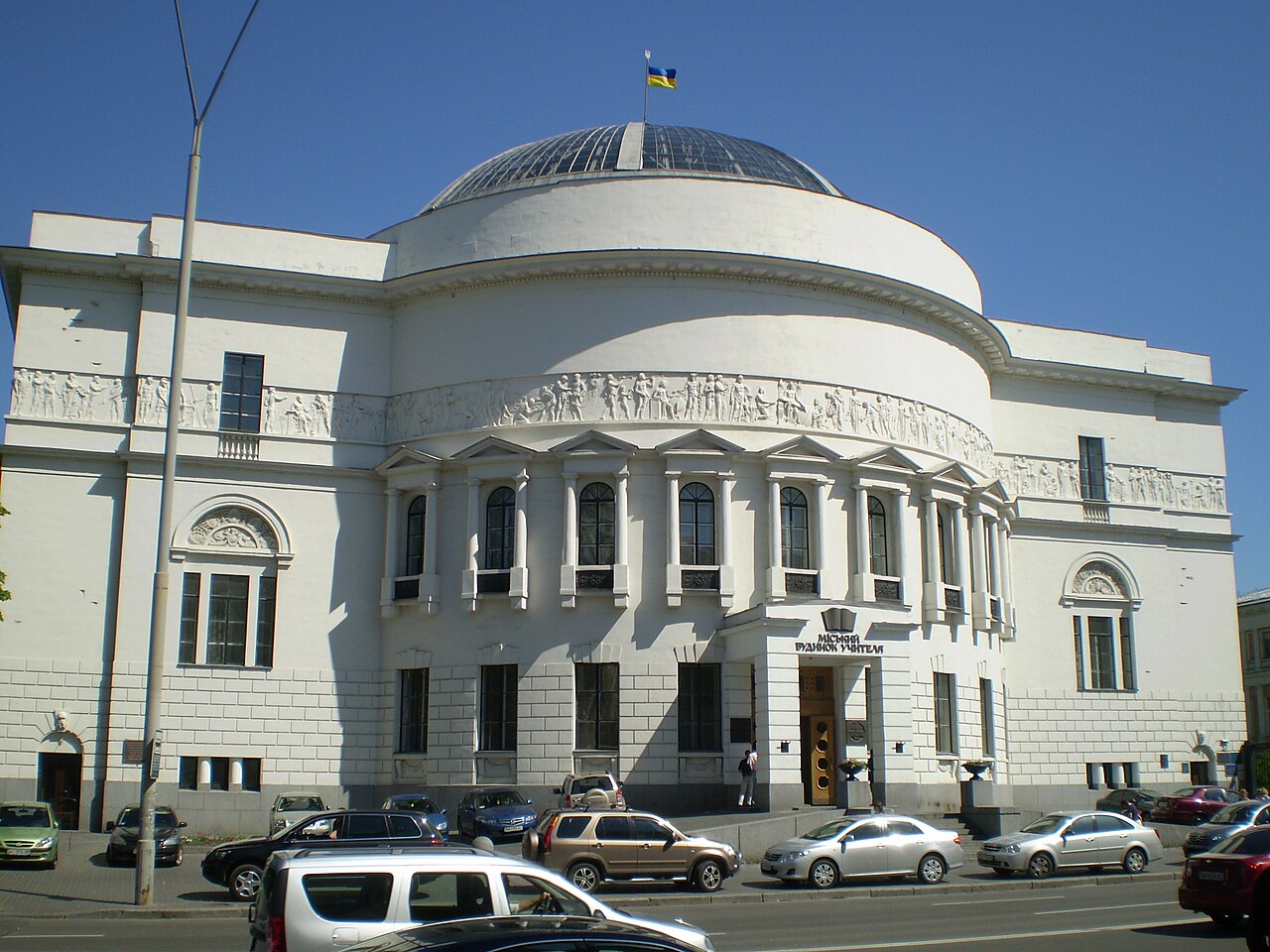- UK


The current site No. 57 on Volodymyrska Street originally formed part of the large estate of the First Men’s Gymnasium. The Pedagogical Museum building was constructed in 1910–1912 to the design and under the supervision of the prominent Ukrainian architect Pavlo F. Alyoshyn.
The three-storey structure features a central semi-cylindrical section in plan, covered by a glazed segmental dome, flanked by two lateral risalits. The museum building was among the first in Kyiv to make extensive use of reinforced concrete, employed in the cornice’s load-bearing structure, the amphitheatre and balconies, the floor slabs, and the spherical wall of the main hall, which endowed the interiors with a sense of lightness and spaciousness.
One of the building’s principal adornments is its multi-figure sculptural frieze, depicting the development of enlightenment and education through allegories of classical mythology, executed from designs by L. A. Dietrich and V. V. Kozlov. In 1937–1938, rear extensions were added according to a project also by Alyoshyn. The architect conceived the museum as a monumental public building in the style of Neo-Classicism (or Modern Classicism).
The building holds exceptional historical significance: in 1917–1918, it housed the Ukrainian Central Rada (UCR) — the supreme representative body of Ukraine, led by Mykhailo Hrushevskyi, which pursued the policy of national and territorial autonomy of Ukraine.